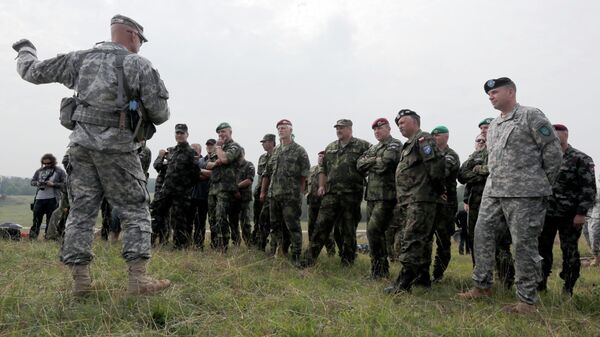"We had a fratricide scenario," said US General Daniel Allyn.
During a recent training exercise, an ally's call for air support took 30 minutes to reach American forces, because "we did not have interoperability right," Allyn said.
By the time US soldiers received the request and opened fire on the enemy position, allied troops had already assaulted it, meaning the barrage came down on them, Breaking Defense reported.
"So am I satisfied with where we are on interoperability?" Allyn said. "I am not, and I will tell you our allies and partners aren't either."
Lieutenant General Ben Hodges, the commander of US Army Europe, said that because troops would be fighting in mixed units – with small US units under allied command and vice versa – it is critical that communications networks be reliable.
"If there is a crisis anywhere in Europe, American soldiers will be fighting alongside allies. We'll be mixed together, so you've got to be able speak securely on FM [radio], you've got to have digital communications that are interoperable."
NATO allies experienced trouble with communications interoperability in Libya in 2011, when French pilots gave up on targeting data from US drones, because the American systems took too long to verify the intelligence then get it to their allies.
For now, the US military and its allies will rely on an interim fix (Battlefield Information Collection and Exploitation Systems) to connect the many networks before implementing a long-term solution (Mission Partner Environment).
"We don't need to get it perfect, we need to get it good enough and keep [improving]," said Lieutenant General Mark Bowman, the Chief Information Officer for the Joint Staff.
But interoperable equipment is just part of the solution, said Brigadier General Willard Burleson, who heads the US Army's Mission Command Center of Excellence.
"It's more than material. There are cognitive, procedural, and then technical aspects. We've got to all be on the same cognitive framework, we've got to have procedures on how to do things, and then there’s a technical solution."




